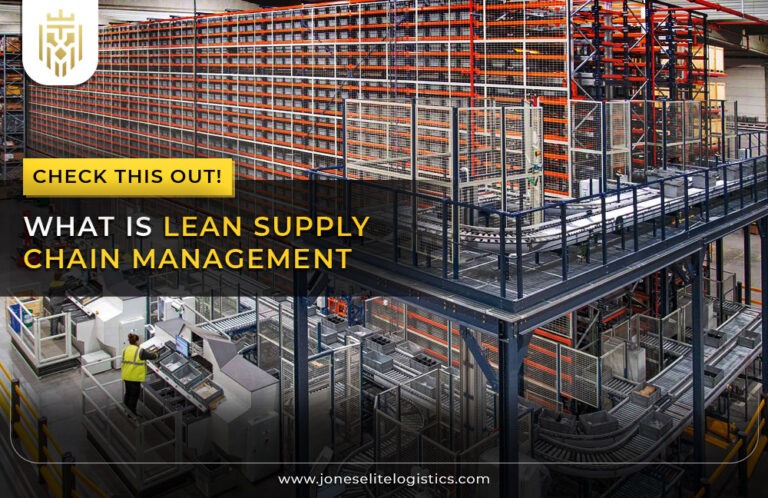Warehouses have been around since the growth of the earliest human civilizations in places like Egypt and Rome, with the word “warehouse’ found to have been initially used in England during the 1300s. Since then, Numerous significant events like the Industrial Revolution and The Second Industrial Revolution feat. electricity has pushed warehouses to transform with a significant increase in size and efficiency while serving the original purpose it was created for – to store goods.

What is a Warehouse?
A warehouse is a dedicated space for storing goods, including raw materials, components, and finished products. These spaces are utilized by manufacturers, importers, exporters, wholesalers, transport businesses, customs, etc. Countries like India and Hong Kong refer to them as godowns. Warehouses are essential in all industries, and we’ll examine their role in logistics today.
Importance of Warehouses in Supply Chains
Supply Chains are procedures joined in a sequence to ensure the production and distribution of commodities, and warehouses act as the place to store them till they are distributed based on the frequency of demands. It acts as a go-between manufacturers/retailers and consumers, helping to connect production and consumption.

Core Functions of Warehousing:
Warehouse serves a crucial role in the logistics industry as its backbone. It serves as the crucial point that enables a smoother and better delivery of goods experience. The core functions of warehousing that need to be followed properly shall be discussed below:
Storage:
Warehouses are being built to fulfill a single primary purpose: storage. Since ancient times, very few changes have been implemented that deviate from its original purpose of housing inventory, equipment, and other goods, and safeguarding them from natural and man-made elements that could potentially damage them.
Inventory Management:
This procedure involves overseeing and maintaining the coordination of tasks such as receiving, tracking, auditing, and managing goods in the warehouse. It focuses on managing incoming and outgoing products with the end goal of facilitating their safe delivery to customers.
Logistics:
Warehouse logistics play a vital role in ensuring the smooth flow of the procedures of managing, shipping, and delivering goods to the destination. Its efficient management positively impacts business efficiency, sales and revenue, and overall customer satisfaction.
Distribution:
This process is to ensure the goods are readily available to be shipped to business locations or individual customers.
Storage Function of Warehouses:
Warehouses have been utilized for storing and currently, numerous outlets, technologies, and methodologies have been developed to store goods according to their physical and chemical properties.
Types of Storage:
- Pallet Racking stands as a commonly and essential utilized method that organizes pallets of material in rows on metal shelves.
- Shelving is far more suitable for industries that manufacture small and lightweight items that can be easily handpicked.
- Mobile shelving utilizes storage shelves filled with a traction system to store goods compactly and is ideal for warehouses with limited spaces.
- Mezzanines are cost-effective, quick to assemble, and create space within the warehouse for the staff to move, pick, and check the storage facilities.

Organization and Layout:
The warehouse layout needs to be arranged after carefully considering the required areas to store, loading and unloading, order preparation, and dispatch of goods. Depending on the warehouse’s size and structure, certain arrangements need to be made to ensure every area gels in well together.
Maximising Space Utilisation:
Warehouses come in all shapes and sizes. Depending on their structure and level of vastness, implementing a unique combination of storage methods that leave space for other functions is generally the ideal way.
Inventory Management in Warehouses:
It involves overseeing every procedure that occurs within the warehouse to track the receiving, storing, and dispatching of goods. Technological advancements have enabled the utilization of machinery that provides more accurate results.
Inventory Tracking Systems:
This software automatically tracks the number of goods that are stocked, maintained, and delivered. It informs the operator and helps them manage incoming and outgoing products while knowing their location
Stock Replenishment:
This procedure ensures product flows through the supply chain at an optimal pace. It needs to be followed regularly to ensure every type of order, whether high or low demand, is fulfilled regularly.
Cycle Counting and Auditing:
It is the critical yet time-consuming process of counting the number of goods in a warehouse periodically. It involves counting a subset of inventory items from time to time, which is checked by the company’s internal and external auditors to ensure it is reliable and sufficient.
Logistics Operations in Warehouses:
Ensuring each consumer has received their goods safely on time is harder than one thinks, and properly implementing these stages ensures a smooth workflow in warehousing functions.
Receiving and Inspection:
This process ensures warehouse efficient and accurate supply chain management, where the inspection, counting, and recording of goods on arrival is done with effect.
Order Picking and Packing:
The orders are stored within the inventory management system, and accordingly, are picked, packed, and placed for delivery to the customer on the due date.
Shipping and Transportation Coordination:
It involves order processing and their suitable placement in the mode of transport that shall deliver these goods. Online portals have enabled tracking of these orders to ensure minimal to zero damage is being inflicted.
Distribution Function of Warehouses:
A type of warehouse, known as a distribution center, is constructed to receive, store, and distribute products to customers. These hubs manage the flow of goods from the manufacturer to the end consumer and are generally located near major transportation hubs.
Last-Mile Delivery:
This guarantees the delivery of goods on time directly to the customer’s doorstep. It often requires the delivery to be quick and cost-effective while providing customer satisfaction.
Cross-Docking Operations:
It involves transferring goods from one mode of transport to another directly, wasting little to no time. This does not involve storing goods for a certain period.
Fulfilment Services:
These act as third-party warehouses that create and ship orders on behalf of other warehouses. The services can be leveraged for times when one has maximised their warehouse storage capacities.

Technological Advancements in Warehouses:
It has been a key player in ensuring warehouses deliver their goods worldwide, as tracking them has been easier due to technology’s ability to track their positions everywhere.
Warehouse Management Systems (WMS):
It is a key player that helps businesses operate, manage, and control daily warehouse functions at each stage, from the arrival of goods till they are delivered to the right client.
Automation and Robotics:
These machines and robots serve as excellent aids to workers with procedures related to inventory from its arrival to its departure. This increases productivity, and accuracy, and improves workforce safety.
Data Analytics for Optimization:
It enables better tracking and analysis of inventory levels, order volumes, picking patterns, and their delivery more effectively.

Importance of Efficient Warehouse Operations:
An efficient warehouse operation results in minimal troubles and delivers more profit over time. It also attracts more potential consumers, as its working efficiency would be spread among businesses looking to deliver/receive their products effectively.
Cost Reduction:
The cost of running a warehouse, whether small or big, tends to have various contributors, such as rent, utilities, labor, insurance, maintenance charges, and taxes. Numerous strategies such as streamlining inventory levels, providing better procedures, and revising smarter shipping networks have been known to reduce costs while increasing productivity.
Customer Satisfaction:
The core end goal of every organization, irrespective of its size and importance, is to provide maximum customer satisfaction. On-time delivery service, reasonable pricing, secure packaging, and proper communication are some prominent contributors.
Competitive Advantage:
Logistics management helps in reducing overhead costs as it optimizes and automizes heavy labor-based tasks such as storage, packaging, and shipping. It minimizes product damage and loss, which minimizes the necessity for replacements and funds.
FAQs
-
What are the 4 major types of warehousing?
Public Warehouses are those owned by a government entity that is made available to private sector companies in exchange for a periodic payment process. Private Warehouses are owned and managed by suppliers and resellers to fulfil their distribution activities. Bonded Storage warehouses are owned and run by both government and private firms to store imported products whose import duties are to be paid. Distribution Centres are utilised to store large amounts of goods for a short period.
-
What is the warehouse management function?
It comprises the principles and procedures that form the day-to-day operations of a warehouse. It currently is found in the form of advanced technology that can be controlled with a few buttons and swipes.
-
Is warehousing part of logistics?
Warehousing and logistics are separate tasks, as the former involves the storage, packaging, and delivery of goods, while the latter involves their transportation to and from numerous locations. However, they stay together as a part of the supply chain management of a company, which ensures the delivery of goods to its clientele.







